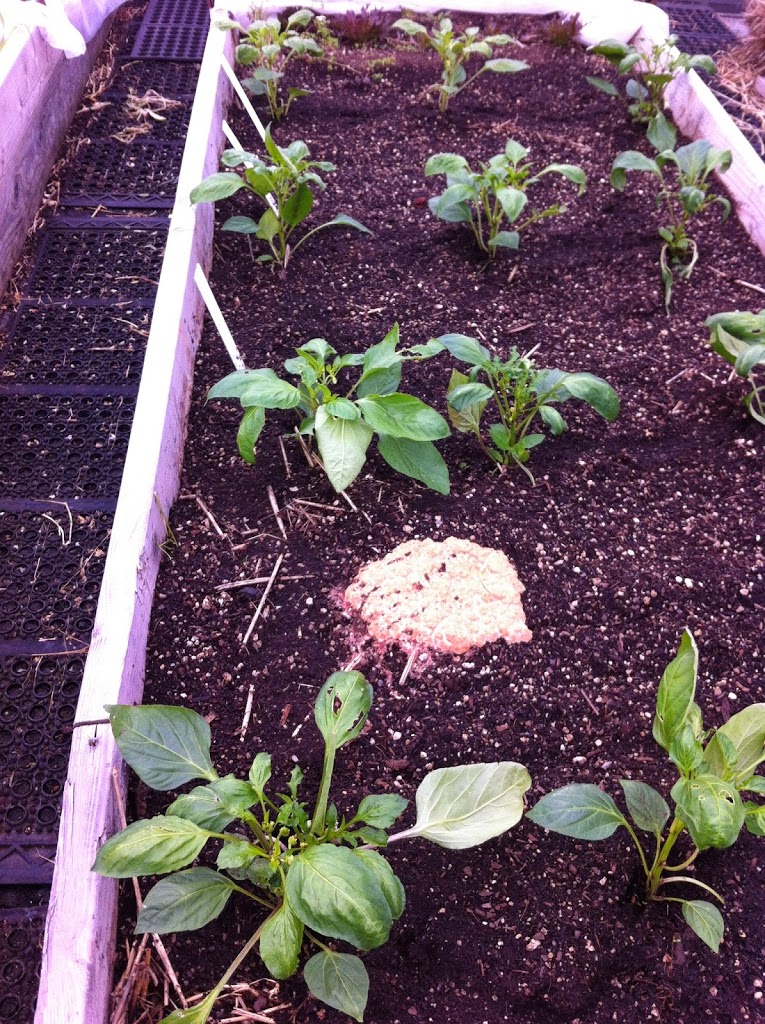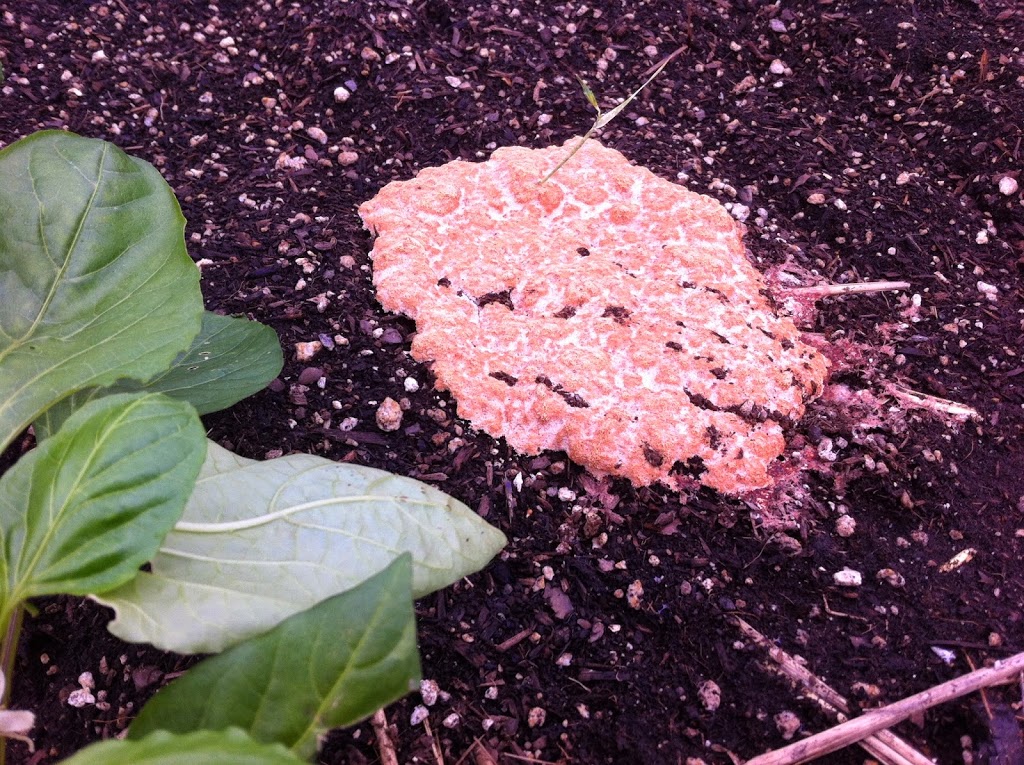I went up to the garden this morning and found what I thought was an obvious indiscretion on the part of one of the restaurant patrons from last night. The Noble Rot is a wine bar, and booze is served as well, so it’s totally possible that some rooftop visitors may have had more alcohol than they could handle. Add a hearty meal to that, and it’s a recipe for a GI disaster, but, please people, to just let go on the rooftop is in bad taste. I mean, the bathrooms are just one floor down, and you pass them to get to the roof. Thus was my initial line of thinking as I contemplated this pile of tawny vomit.
But after the initial flash of being offended, I got curious, went a bit closer, and discovered this was no human creation. Plus there were no chunks, so it couldn’t have been vomit! Phew! In fact this blob represents something quite unique among living things: a slime mold. Once thought to be a fungi, it has been reclassified with the amoeba-like protozoa. It distinguishes itself in my mind by being both gross and utterly fascinating at the same time. You may be having a hard time embracing the fascinating part of an organism that looks like dog barf, but have a look at these two short youtube clips:
http://www.youtube.com/watch?v=Eas2zOSKIaQ
https://www.youtube.com/watch?v=B79Z56vl02A
So NOW are you into slime molds?
Sime molds are either Gulliverian single cells with thousands of nuclei (plasmoidial slime molds) or colonies of single-celled organisms (cellular slime molds), but either way they can sense things like light and chemicals (as in food) and move toward or away from them as their development requires. The fact that they can choose the most efficient path in a maze to find food is unnerving. Good thing they don’t move fast. Even the slowest among us can still outrun a slime mold. But if we were really slow runners and tried to escape a slime mold by dodging this way and that through various alleys, it would sense us, follow us, and eventually eat us.
I’ve seen these things burst forth on piles of woodchips and occasionally in various compost piles I’ve tended, but never in the rooftop garden. Why now? Well, this mold appeared on a bed that had lots of straw worked into it, a practice I started only this year, given that we had a lot of extra straw hanging around from our mushroom growing (see the last post, “What’s in Your Drawers?”) Somehow the extra carbon must stimulate a trip to the soil surface for a look see around, probably to generate spores (the “puke” phase is associated with spore production) and get blown somewhere more favorable.
Does its appearance augur good or ill for the garden? Who knows? I know I get excited when I see a new bird in the garden or discover a new insect, but a slime mold….it’s a little harder to thrill to that, even if it does signal evolving ecological complexity. Still I see no harm in taking a “live-and-let-live” approach, and yet that slime mold is one of the first things one encounters upon coming up to the roof. Kind of off-putting to the dinner guest who wants to see where his or her restaurant food is coming from. I can imagine it now as the rooftop tour guide says, “Not only is growing food on a rooftop radical, but we also fertilize all our veggies up here with puke! “
Back in the day when I farmed along a creek here in Portland, I watched the small, muskrat-like mammals called nutria make their way back and forth from the creek to my fields. I was charmed by the little critters until they decimated my lettuce. Then it was war, and I got a good BB gun (legal in the city) and took those guys out. Though the slime mold hasn’t harmed production, I risk the negative PR its presence will surely bring to the uninitiated, so I think that slime mold is going to have to go. However, being that it is smart enough to solve a maze, it has probably already sensed my intent and is hard at work reconstituting itself somewhere else for another emergence.


